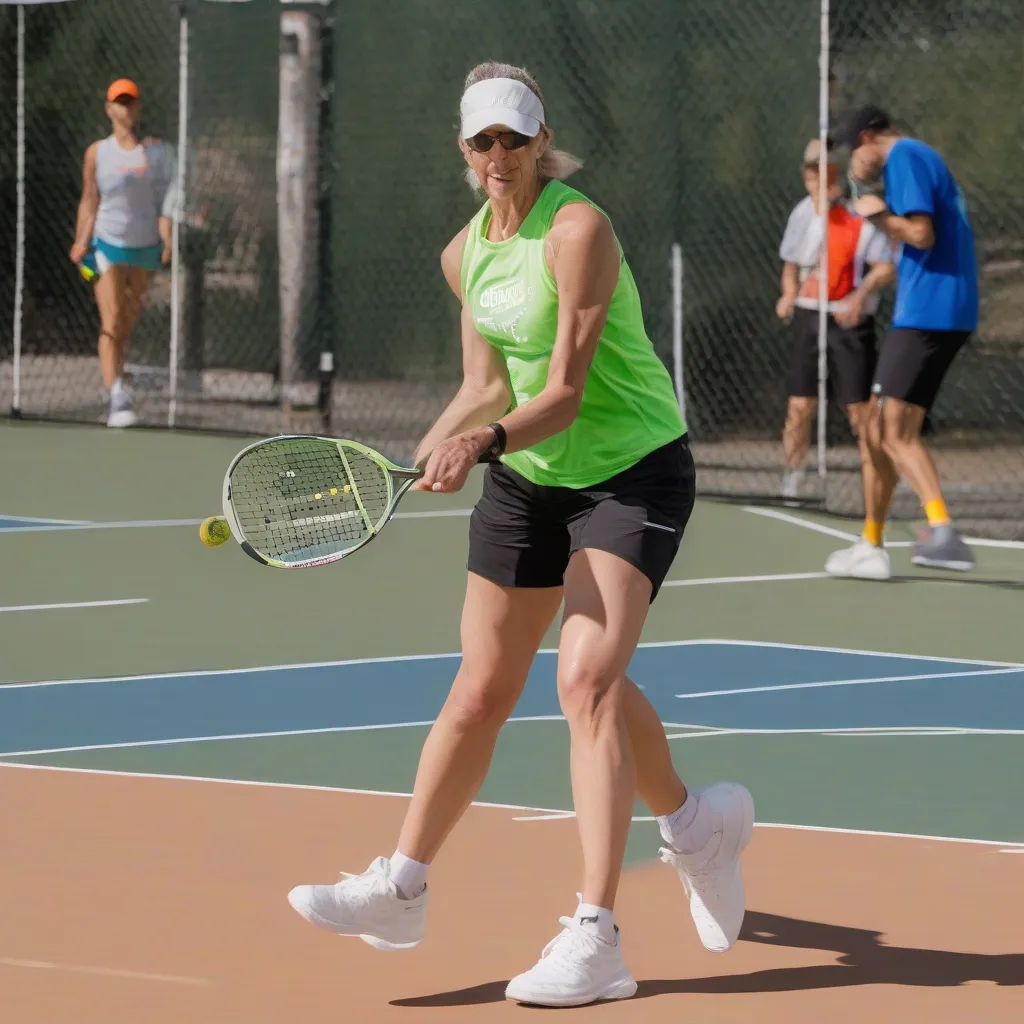Imagine this: you’re in the middle of a heated pickleball match, the score is tied, and your legs start to feel like lead. Frustrating, right? Pickleball, despite its friendly vibe, demands surprising bursts of speed and agility. It’s not just about dinking; it’s about dynamic movement, quick reactions, and the endurance to outlast your opponents. That’s where interval training comes in. This isn’t just another fitness fad; it’s a strategic way to elevate your pickleball game, allowing you to play longer, stronger, and smarter.
Understanding the Need for Pickleball Endurance
Pickleball, although played on a smaller court than tennis, involves rapid changes in direction, quick bursts of speed, and repetitive movements that can tax even the fittest athlete. A common misconception is that strength alone is enough. While strength plays a role, endurance is the key to maintaining peak performance throughout a match, especially in tournaments where multiple games are played back-to-back. Do you want to be the player who fades in the third game, or the one who dominates until the final point? Choosing the right training can make all the difference.
What is Interval Training and Why is it Ideal for Pickleball?
Interval training involves alternating periods of high-intensity exercise with periods of rest or lower-intensity activity. This method of training is incredibly effective for improving both aerobic and anaerobic capacity, which are crucial for pickleball endurance. Think of it like this: you’re training your body to recover quickly from short bursts of intense activity, mirroring the demands of a pickleball match. According to a study published in the Journal of Strength and Conditioning Research, interval training is significantly more effective than steady-state cardio for improving both aerobic and anaerobic fitness.
Designing Your Pickleball-Specific Interval Training Plan
Crafting an effective interval training plan involves considering several factors. First, assess your current fitness level. Are you a beginner, intermediate, or advanced player? Your training should progressively challenge you without leading to overtraining or injury. Start by incorporating short intervals of high-intensity activity, gradually increasing the duration and intensity as you get fitter. This could involve sprinting, agility drills, or even playing short, high-intensity pickleball games.
On-Court Interval Drills
Bring the intensity of interval training right onto the pickleball court! Try these drills:
- Dinking Sprints: Dink for 30 seconds, then sprint to the baseline and back, repeat for 8-10 rounds.
- Volley Bursts: Perform rapid-fire volleys at the net for 15 seconds, followed by 15 seconds of rest, repeat for 6-8 rounds.
- Side-to-Side Shuffles: Shuffle quickly from sideline to sideline for 30 seconds, then rest for 30 seconds, repeat for 6-8 rounds.
Off-Court Interval Exercises
Supplement your on-court training with off-court exercises like:
- High-Intensity Interval Training (HIIT): Perform exercises like burpees, jumping jacks, and mountain climbers in short, intense bursts followed by rest periods.
- Sprint Intervals: Sprint at maximum effort for 30 seconds, then jog or walk for 60 seconds, repeat for 6-8 rounds.
- Jump Rope Intervals: Jump rope intensely for 1 minute, then rest for 30 seconds, repeat for 6-8 rounds.
Listening to Your Body and Avoiding Overtraining
While pushing yourself is important, listening to your body is paramount. Overtraining can lead to injuries and hinder your progress. Pay attention to signs of fatigue, muscle soreness, and decreased performance. Rest and recovery are just as crucial as the training itself. As a certified nutritionist, I often advise my clients to prioritize adequate sleep, hydration, and a balanced diet to support their training efforts. “Remember,” as sports physician Dr. Jordan Metzl advises, “rest is an essential part of training, not a sign of weakness.”
Integrating Interval Training with Your Pickleball Schedule
Don’t try to overhaul your routine overnight. Start by incorporating one or two interval training sessions per week, gradually increasing the frequency and intensity as your fitness improves. Remember, consistency is key. Find a schedule that works for you and stick to it. Integrating your training with your pickleball playing schedule can optimize your performance and ensure you’re always ready for the next game. You can explore resources like How to Effectively Combine Pickleball Skills Training with Fitness for further guidance. Also, understanding the difference between Aerobic vs. Anaerobic Training for Pickleball can help tailor your training to the specific demands of the game.
Fueling Your Performance: Nutrition Tips for Endurance
Optimal nutrition plays a vital role in supporting your interval training and overall pickleball performance. Focus on consuming a balanced diet rich in complex carbohydrates, lean protein, and healthy fats. Carbohydrates provide the primary fuel source for your muscles, while protein aids in muscle repair and growth. Healthy fats support overall health and hormone production. Hydration is also essential. Make sure to drink plenty of water before, during, and after your training sessions and matches. For those seeking to define realistic fitness goals, resources like How to Set Realistic Fitness Goals for Pickleball can provide valuable insights.
 Interval Training for Pickleball Endurance
Interval Training for Pickleball Endurance
No products found.
Conclusion: Elevate Your Game with Interval Training
Interval training isn’t just a workout; it’s a strategic advantage. By incorporating these tips into your routine, you’ll not only improve your endurance on the pickleball court but also enhance your overall fitness and health. Remember to listen to your body, prioritize rest and recovery, and fuel your performance with proper nutrition. Are you ready to take your pickleball game to the next level? Share your experiences with interval training in the comments below, and don’t forget to check out our other resources on Conditioning Your Body for Pickleball Matches and Heart Rate Training for Optimal Pickleball Conditioning for further guidance. Let’s make every point count!